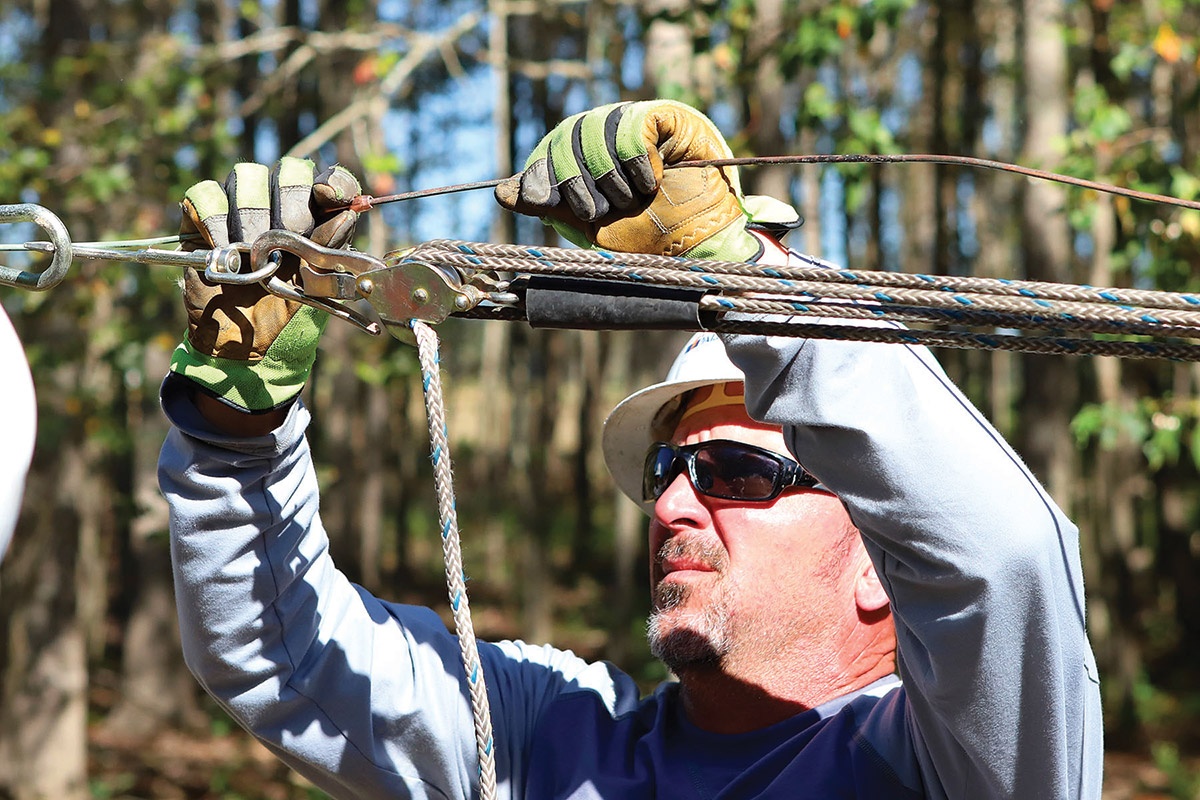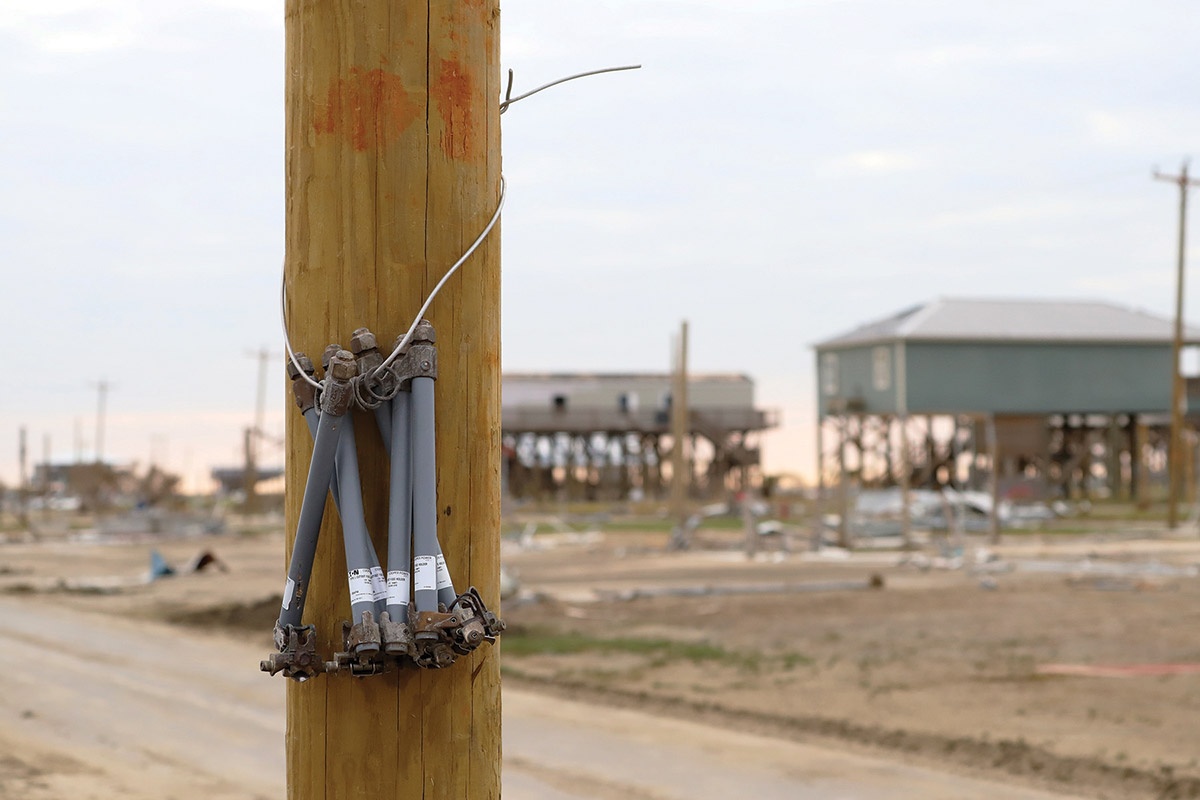One of the seven principles all cooperatives follow is Cooperation Among Cooperatives. During challenging times, cooperatives work with one another to serve the best interests of members and communities. A common example of this principle in action is when electric cooperatives provide aid following natural disasters, such as hurricanes or ice storms.
Sam Houston Electric Cooperative and its members have experienced such trials, such as when hurricanes and other natural disasters have damaged our distribution system. The Co-op also has provided aid to other co-ops following similar disasters, typically by sending skilled line technicians to help restore service as quickly and safely as possible. But in October the Co-op provided a different type of aid to Jeff Davis Electric Cooperative in Louisiana.

Jeff Davis EC is a small cooperative but serves a large territory. As of August 27, JDEC had 49 employees and just over 11,000 meters in several parishes in southwest Louisiana. For a little context, Sam Houston EC serves 78,000 meters with 160 employees.
Hurricane Laura churned in the Gulf of Mexico for days in late August as the Gulf Coast region waited for the major hurricane to make landfall. Experts predicted the hurricane would make landfall either at the Texas-Louisiana border or farther east, in Cameron Parish, Louisiana.

Sam Houston EC made preparations to bring in hundreds of contractors for the second time in 2020. Luckily for the Co-op and its consumer-members, only 7,000 meters lost power from this storm.
Other East Texas co-ops and those in western Louisiana were not as lucky. More than 400,000 members lost power for days and even weeks following Laura.

With crews working 16-hour days for more than a month, JDEC was able to restore power to 70% of its members.
Then Hurricane Delta made landfall October 9, knocking out power to every meter on JDEC’s system for the second time in less than two months.

The co-op needed to communicate with its members regularly during this challenge. Addie Armato of the Association of Louisiana Electric Cooperatives had been helping JDEC with communications responsibilities, but she needed to assist other co-ops after Delta.
So Armato reached out to Keith Stapleton, chief communications officer at Sam Houston EC, a few days before Delta made landfall in Creole, Louisiana, less than 30 minutes east of Cameron, where Laura had made landfall.

Armato asked if Stapleton and Sam Houston EC would be able to send a communications specialist to assist JDEC after Delta. Stapleton spoke with Doug Turk, the Co-op’s general manager and CEO, who supported the mutual aid agreement to send Chad Simon, a communications specialist, to help JDEC. Though Simon had worked in the electric co-op industry for only two years, he and Armato were not strangers, as they met at a conference in 2019.
In the week after Delta, Simon met Armato at the tent city constructed by JDEC for visiting co-op crews and contractors. Armato drove him around part of the system to help him understand the challenges they faced after the hurricane.

“Where are the lines? Where the poles?” Simon asked, finding it difficult to comprehend that there was almost no trace of the power lines that recently provided electricity to the area’s residents and oil and natural gas pumping stations. Armato simply shrugged her shoulders, raised her palms upward and said, “We don’t know.”
Simon’s next five days started at 5:15 a.m., when JDEC employees would meet in their mobile operations trailer to discuss the restoration plans for the day, and usually ended at 8 p.m. or later.

At 5:45 a.m. a JDEC employee would lead everyone in the Pledge of Allegiance and a prayer in the breakfast tent. That was followed by crew assignments and anything that needed to be shared with those providing mutual aid.
Simon would then set off to photograph the area to show the progress of restoration efforts, speak with consumer-members, and visit line technicians from other co-ops and contractors from around the nation.

He said his evenings consisted of speaking with JDEC superintendents to get updates on restoration progress.
“That was difficult because JDEC does not have automated meters like Sam Houston EC does,” Simon said. “Everything is still done by hand. Many members had evacuated, and so many homes were completely destroyed or not safe for power to be turned on, so it was difficult to get a true number of how much progress was made each day.

“The goal of the communications efforts was to inform members, agencies and news organizations of the progress being made,” Simon said. “We even shared information advising cleanup crews not to stage debris under power lines and to be aware of power lines. Several times a truck or piece of machinery took down a line that had just been restored. That is very dangerous, and it slows down the restoration process, which is frustrating to everyone.”
Simon traveled to most parts of JDEC’s service area during his week with the co-op and spoke to many members. He noted that it isn’t always easy to speak to people who have been through a disaster, but he feels talking to them is important.

“First, I think people need someone to talk to at times,”?he said. “Second, it is better than just driving up, taking photos and then leaving. I feel by talking to them, it shows that I see them as a person, not just an object, and I think we all enjoy that. Third, I learn how important electricity is to people. When you speak to someone that has been using a generator for more than 50 days to survive, it is just that—survival. It isn’t really living; it is just survival.”
At Sam Houston EC, Simon takes photos and writes stories about employees and members, which he also did while at JDEC, spending several hours photographing and speaking with the employees in the co-op’s headquarters in Jennings.

“I told Mike [Heinen, JDEC?general manager] I wanted to tour the headquarters and document those employees,”?Simon said. “He felt it was a great idea. Rightfully, a lot of attention is shown to the line technicians and visiting crews, but the other staff at a co-op does a lot, too. I thought it would be important to spend time with them as well.”
Simon said that his weeklong stay in a portable bunkhouse at JDEC’s tent city took him back to his years as a Marine Corps combat photographer in Iraq, where he was deployed in 2006 and again in 2008 and stayed in similar environments. “It is like going home, in an odd way,” he said. “We ate in a huge tent that could seat about 500 people. There were several flush bath-rooms to use and showers, but there were also port-a-johns in tent city.”

After a week, Simon returned to Sam Houston EC with admiration for the resilience and strength that JDEC employees exhibited.
“I learned that 19 of their employees lost homes or their homes were severely damaged,”?Simon said. “After being there for a week, I couldn’t identify who they were. They were just so resilient and had a positive attitude. They were amazingly hospitable to me and the other visiting workers. I learned so much about the American spirit during my seven days there.”









